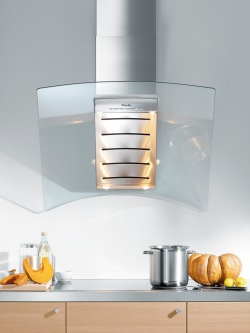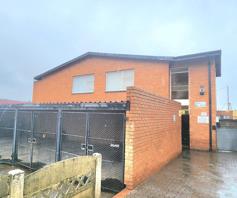A cooker hood will make cooking more pleasant by filtering out any fat molecules, conducting away the steam and neutralising smells to keep your kitchen smelling fresh and clean.
 The recommended distance between a hob and a cooker hood is around 65cm to 75cm, and a hob measuring up to 75cm will require a cooker hood with a width of 90cm, while a hob measuring up to 90cm wide, will require a cooker hood with a width of 100cm to 120cm.
The recommended distance between a hob and a cooker hood is around 65cm to 75cm, and a hob measuring up to 75cm will require a cooker hood with a width of 90cm, while a hob measuring up to 90cm wide, will require a cooker hood with a width of 100cm to 120cm.This is according to Mercia de Jager from Miele, who says aside from making an impressive visual statement by forming the stylish centrepiece of your kitchen, cooker hoods also offer the practical service of removing any airborne vapours, odours and grease to keep your kitchen environment as pleasant as possible.
She says there are five main types of cooker hoods available on the market, including integrated, wall-mounted, island, downdraught and ceiling cooker hoods.
No hood without a hob
The type and size of your hob will, to a large extent, dictate what kind of cooker hood best serves your needs. De Jager says what kind of hob you select will have an enormous impact on the size of cooker hood you should choose. The two appliances should work hand in hand – you can’t buy one without considering the other.
All cooker hoods need to be positioned centrally over the hob in such a manner that they cover it sufficiently. To decide what cooker hood width will best suit your hob, you can draw an imaginary straight line upwards from the edge of the hob through to the lower edge of the cooker hood. An angle of 5° outwards for wall-mounted hoods is advisable, while for island hoods, the angle needs to be at least 10°.
The recommended distance between a hob and a cooker hood is around 65cm to 75cm, and a hob measuring up to 75cm will require a cooker hood with a width of 90cm, while a hob measuring up to 90cm wide, will require a cooker hood with a width of 100cm to 120cm.
 Check out the noise levels of the unit as this is especially important today, where kitchens often double as the social hub of the home.
Check out the noise levels of the unit as this is especially important today, where kitchens often double as the social hub of the home.“The major exceptions to this rule include cooker hoods with multi-zone edge extraction, and cooker hoods servicing gas hobs, which can both be the same size as the hob below, while island cooker hoods always need to be larger than the hob below.”
Silence is golden
When choosing your cooker hood, de Jager recommends that you check out the noise levels of the unit. She says this is especially important today, where kitchens often double as the social hub of the home. You don’t want operational noises to interfere with any social discussions.
Cooker hood noise generally stems from the motor and the moving air throughout the unit, however, de Jager says both these factors can be influenced. She says any good quality cooker hood should have a noise level of less than 60 decibels.
 A good quality cooker hood should offer excellent energy efficiency, without compromising in terms of power and efficiency.
A good quality cooker hood should offer excellent energy efficiency, without compromising in terms of power and efficiency.Energy efficiency
With the ever-rising cost of electricity, it is important to consider energy efficiency when selecting your cooker hood. A good quality cooker hood should offer excellent energy efficiency, without compromising in terms of power and efficiency.
She says, in general, the fan and the lighting account for the bulk of any cooker hood’s energy consumption, so you should look out for models with LED downlights, and ones that boast a DC motor.
Another feature to look out for is the inter-hob-cooker hood communication as this is not only a convenient feature, but it can also play a major role in reducing energy consumption.
Cooker hood customisation
With the eternal quest for uniqueness and customised solutions, your cooker hood should also be as individual as your taste preferences. Today, you can customise your choice of cooker hood to best suit your needs.








